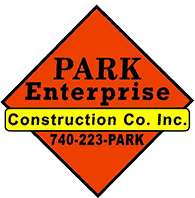Editor's Note: This blog post was originally published on April 19th, 2018 and was updated on July 16th, 2018.
You might not think much about it, but your commercial parking lot is absolutely part of your customer's first impression. In fact, your customer’s experience with your business doesn’t start in the store. It starts as soon as they drive into your parking lot!
Will their first impression of your business be a nice, smooth ride, or will they encounter cracks and potholes, or even step out of their car into a puddle of water?
Being proactive with your parking lot now will avoid much larger problems in the future.
How a Poorly Maintained Asphalt Parking Lot Looks to Your Customers“Lazy.” “Uncaring.” “Disorganized.” “Business must be suffering.”
Do those things define you and your business? Probably not, but they’re common assumptions. Customers often don’t know the tough decisions you’ve made to balance the budget. Nonetheless, even moderate property issues stir those gut reactions from consumers wishing to establish trust.
From an outsider’s perspective, a poorly maintained commercial parking lot foreshadows a host of problems they could encounter:
- Does this lack of attention to detail translate to their business practices?
- Can they truly take care of me as a customer?
- Will they even still be in business next year?
- And, if your parking lot is really bad, you might get some vehicle insurance claims and potential personal injury litigation
Routine maintenance and timely repaving jobs are your only defenses against unsightly and damaging commercial parking lot blemishes. Customers appreciate the extra effort, but maintaining your lot shouldn’t be a luxury.
6 Benefits of a Maintained Parking Lot
Here are the benefits of nice lot:
- Prevent a larger investment in your lot in the future
- Avoid any possibility of legal action for vehicle or personal injury
- ADA compliance
- Code compliance
- Improve resale value
- You and your employees can take pride in every aspect of your business
So, Here are 6 Design Considerations to Reap Those Benefits
1. Stone Lot Preparation
Many commecial lots are topped with loose construction aggregate stone - most likely grades like #57 or #8. You DO NOT want to pave new asphalt directly atop loose stone. You should first ask your asphalt paving contractor to skim off the top stone layer. (Helpful hint: An experienced contractor should know this important step in the first place.)
2. A Solid Foundation
The strength of your subgrade will make or break the health of your asphalt parking lot for years to come. An uneven, unsupportive foundation will quickly erode a lot’s stability from below.
It may be necessary to dig deep, at first, in order to rebuild and precision roll the subgrade to be more flat and sturdy. Do a proof roll (which involves driving a fully loaded dump truck over the foundation) to uncover any weak spots or other trouble areas. Your contractor can stabilize weak spots or areas of pumping mud by introducing an easily compactable construction aggregate stone grade like #304 or #411.
Then, of course, rolling and compacting the subgrade properly should provide the support the asphalt needs. This should eliminate high and low areas that create weak, uneven asphalt.
3. ‘Hip To Be Square’
We see this often on aging stone parking lots: Grassy or landscaped areas surrounding the lot have begun encroaching to the interior. These areas must be ripped up and squared off for an attractive, functional asphalt parking lot.
Not only will a parking lot design 100 feet wide on one side and 110 feet wide on the other appear noticeably sloppy and unprofessional, but it could also cause unforeseen maintenance issues in the future.
4. Anticipate the Traffic
An asphalt parking lot that regularly holds light-duty traffic from, let’s say, shoppers in mid-sized sedans will undoubtedly experience less stress than one that carries tractor trailers daily.
The severity of traffic should dictate your asphalt’s thickness and durability. Presumably, you know well the vehicles that frequent your lot. If not, it’s time to do a traffic study.
(Another helpful hint: The garbage truck’s route through your parking lot will most likely endure the most regular abuse.)
5. Pick the Right Mix
Most likely, your contractor will have an asphalt cocktail of choice. While it may work well in most instances, it may not be sturdy enough for your needs. Discuss this with your contractor to agree on the proper asphalt mix to suit the job.
6. Ensure Proper Drainage
Water is a killer. Left standing, water will seep down through porous asphalt and slowly (but surely) erode the subsurface. In winter, water will create and expand cracks as it expands and contracts with the freeze-thaw cycle.
Would it be best to strategically place stormwater catch basins? Or should your lot be slanted slightly to allow water to slide into a nearby ditch? Discuss the best plan with your contractor based on your location and its stormwater infrastructure.
Compaction is Key to a Building a Great Commercial Parking LotWhy is asphalt compaction important? It increases the strength, durability, and functional lifespan of your asphalt parking lot.
Factors such as the traffic level in your lot as well as permeability needs cause variation in parking lot compaction considerations.
Finding an experienced contractor who follows ODOT specs for proper thickness is key in ensuring your compaction contributes to a great lot. It’s best to get on the same page with your contractor to develop the perfect plan for your asphalt parking lot.




